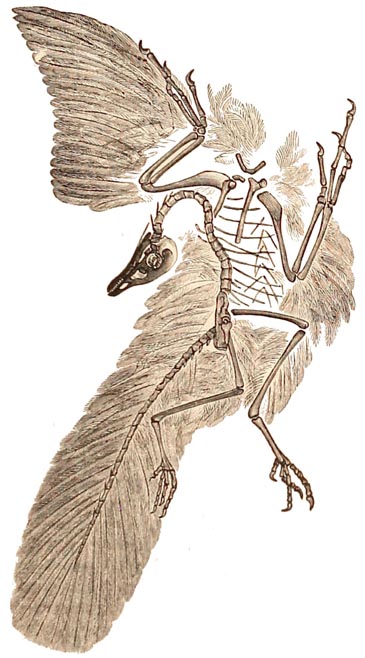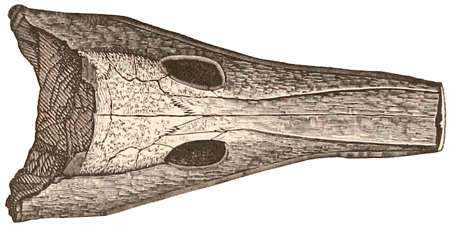PREFACE 003
003
004
005
Table of Contents 006
006
007
Abbreviations 008
008
INTRODUCTION
Relations of the Science of Geology 9
009
010
011
012
>North American Geological History, Geology, Physiography,
geological history, strata,
Subdivisions of Geology 13
013
014
>Physiographic Geology, Structural Geology, Dynamical Geology,
Historical Geology,
PART I. - Physiographic Geology.
1. The Earth's General Contour and Surface Subdivisions 15
015 016
017
018
019 020
021
022
023
024
025
026
027 028
029
foldout,
page 20
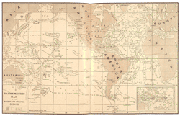
World Bathymetry Map
(200 ppi - 472 kb)
|
2. System in the Reliefs of the Land 30
030
031
032
033
034
3. System in the Courses of the Earth's Feature Lines 35
035
036
037
038
039
040
041
Pacific island chains, Hawaiian chain, Polynesian chain,
Australasian chain, New Zealands chain
4. Oceanic and Atmospheric Movements and Temperature 42
042
043
044
045
046
047
048
049
050
051
"The diversity about us, which seems
endless and without order, is an exhibition of perfect system under
law. If the earth has its barren ice-fields about the poles, and its
deserts no less barren toward the equator, they are not accidents in
the making, but results involved in the scheme from its very
foundation." p.51-2.
Ferrel's Law of wind rotation (1858), tidal wave motion, ocean
currents, Sargasso Sea, oceanic temperatures, torrid zone, temperate
zone, frigid zone, isothermal zone, atmospheric currents, atmospheric
heat absorption, surface winds, moisture absorption,
5. Geographical Distribution of Plants and Animals 52
052
053
054
055
056
057
058
059
060
"The Sea, like the snow-cloud with
its flakes, in a calm is always letting fall on its bed, showers
of microscopic shells, and all pelagic life adds to the showers."
p. 57 Maury.
biological conditions: temperature, light, pressure, moisture,
distribution of plants: ferns, lycopods, conifers, distribution of
animals: Australian marsupials, Oriental mammals, African Mammals,
Madigascar, South American Neotropical region, North
American Nearetic region, European Palearctic or Eurasian region,
worldwide migration of deep aquatic species, shallow water or
littoral zone species, pelagic life, Foraminifers, Radiolaria,
Rhizopods, Hexactinellids, echinoderms, Molluscs, Brachiopods,
Gastropods, worms, Crustaceans, Ganoid fish, Pelagic fish, Cestraciont
sharks,
surviving trilobite species p59, hot water species p60,
PART II. - Structural Geology.
Corals,
1. Rocks: their Constituents and Kinds 61
061
062
063
064
065
066
067
068 069
070
071
072
073 074
075
076
077
078
079
080
081
082 083
084
085
086
087
088
Stable oxides, carbon, oxygen, Rock-making minerals: silicon,
sulphur, phosphorous, nitrogen, chlorine, bromine, flourine, boron,
quartz, alumina, sapphire, corundum, aluminum silicates (feldspars),
mica group: muscovite, biotite, tourmaline, garnet, topaz, zircon,
beryl, Magnesium silicates: chrysolite, chondrodite, hornblende,
pyroxene, Magnesium silicates, talc, serpentine, chlorite group,
alumina silicates, kaolinite, zeolite, carbonates, calcite (calcium
carbonate), sulphates: gypsum, anhydrite, barite, phosphates and
flourides: apatite, flourite (flourspar), sulphides, pyrite, galena
(lead sulphide), sphalerite (zinc sulphide), oxides, hematite (Fe
2O
3),
Magnetite, (Fe
2O
4), limonite, Organic matter:
calcareous limestones, fossiliferous, siliceous fossils, phosphatic
fossils, guano (calcium phosphate), carbonaceous rocks, lycopods,
fragmental (clastic) rocks, crystalline rocks, igneus rocks,
metamorphic rocks: marble, granite, gneiss, granitoid, micro-granitic,
micro-crystalline, porphyritic, foliated, fluidal, glassy, lavas,
vesicular, scoriaceous, amygdaloidal, limestones (calcareous rocks):
magnesian limestone (dolomyte), hydraulic limestone, Oölyte,
chalk, marl, shell limestone, coral limestone, travertine limestone,
fragmental rocks: conglomerate, grit, sandstone, shale, argillyte,
tufa, clay, kaolin, loess, alluvium, crystalline rocks: gabbro, basalt,
garnet, tourmaline, hornblende,
2.Terranes: their Constitution, Characteristics, Positions, and
Arrangement 89
089
090
091
092
093
094 095
096
097
098
099
100
101
102
103
104
105
106
107
108
109
110
111
112
113
114
115 116
stratified formations, stria (furrows), displaced strata,
outcrops,
strike, inclination, dip, flexure, overthrust, anticlines, synclines,
fractures, faults, conformability, unconformability,
PART III. - Dynamical Geology.
Agencies and General Subdivisions 117
117
1. Chemical Work 118
118
119 120
121
122
123
124
125
126
127 128
129
130
131
132
133
134
135
136
137
138
139
solution, oxidation, deoxidation, hydration, carbonic acid erosion,
calcareous formations, tufa deposits, dolomyte making, clay formation,
blanching, concretization,
2. Life: its Mechanical Work and Rock Contributions 140
140
General Remarks on Rock-making 141
141
142
143
144
145
146
147
148
149
150
151
152
153
154
rock-makers: corals, crinoids, rhizopods, diatoms, millepores,
bryozoans, brachiopods, mollusks, coral reefs, atolls,
Protective and Other Beneficial Effects
155
155
Transporting Effects 156
156
Destructive Effects 157
157
3. The Atmosphere as a Mechanical Agent 158
158
159
160
161
162
163
164
165
aeolian, eolian (wind) denudation, material transport,
4. Water as a Mechanical Agent 166
166
167
168 169
170
tidal wave, wind wave, water cycle: evaporation and precipitation,
denudation, transportation, deposition,
Fresh Waters: Rivers and Lakes - 171
171
172
173 174
175
176
177
178
179
180
181
182 183
184
185
186
187
188
189
190
191
192
193
194 195
196
197
198
199
200
201
202
203
204
205
206
207
208
fluvial history, drainage areas, floods, river velocity, raindrop
erosion, river erosion, river bends, eddies, pot-holes, kettle-holes,
waterfalls, sediment, deltas, flood-grounds, river flats,
alluvial cones, loess, delta-formation, Mississippi delta, great lakes,
Lake Superior, Lake Michigan, Lake Huron, Lake Erie, Lake Ontario,
lacustrine formations, buried river valleys: Sierra Nevada,
Subterranean waters, landslides,
The Ocean 209
209
210
211
212
213
214
215 216
217
218
219 220
221
222
223
224
225
226
227 228
229
tidal waves, earthquake waves, tidal inflow, tidal outflow,
beach-making, sandbars,
Freezing and Frozen Water: Glaciers, Icebergs
230
230
231
232
233
234
235
236
237
238
239
240
241
242
243
244
245
246
247
248
249
250
251
252
glaciers, glacial flow, Greenland ice, ice plasticity, glacial
denudation and abrasion, icebergs,
5. Heat 253
1. Sources of Heat 253
253
254
255
256
257
258
11 year sun cycles, energy of sun, effect on gulf
stream,
2. Expansion and Contraction. 259
259
260
261
262
263
264
solar heating, drying, cooling contraction, basaltic rock,
obsidian column, earth interior heating, subterranean heat
gradient,
3. Igneous Action and its Results 265
265
266
Volcanoes 267
267
268 269
270
271
272
273 274
275
276
277
278
279
280
281
282 283
284
285
286
287
288
289
290
291
292
293
294 295
296
Mount Shasta, Mount Vesuvius, lava cones, Hawaiian volcanoes,
Loa,
Kea, Kilauea, lava, igneus rocks: basaltic class, andesyte class,
trachyte class, scoria, volcanic bombs, explosive eruptions, Krakatoa,
fumaroles, solfataras,
Non-volcanic Igneous Eruptions
297
297
298
299
300
301
302
303
304
Thermal Waters, Geysers.
305
305
306
307
308
4. Metamorphism 309
309
310
311
312
313
314
315 316
317
318
319 320
321
322
323
324
325
326
metamorphic rock, trap dikes,
5. Mineral Veins, Lodes, Local Ore Deposits
327
327 328
329
330
331
332
333
334
335
336
337
338
339
340
341
342
343
344
fissure veins, gold-bearing quartz veins, Lake Superior copper
mines, Comstock Lode, Leadville, Eureka,
6. Hypogeic Work: Earth-shaping, Mountain-making 345
345
346
347
348
349
350
inland ancient shorelines, effects of polar icecaps, piling of
ice
over land, Eocene Nummulitic beds, Cretaceous beds, Rocky Mountain
region, Appalachian region Carboniferous period, thickness tens of
thousands of feet, unequal global changes, secular changes: extremely
slow subsidence -- a few inches or feet a century, paroxysmal changes:
abrupt displacements, 16 cycles of alternate emergence and submersion
(coal formation of Illinois), subsidence of Jupiter Serapis temple at
Pozzuoli, contemporary Greenland subsidence, gradual subsidence of
coral reefs
1. Characteristics of Disturbed Regions and
Mountains. 351
351
352
353
354
355
356
357
358
359
360
361
362
363
364
365
366
367
368
flexure faults, solid flow, displacements under
pressure, paleozoic formation Appalachian Mountain range -
Carbonic age, orographic science, upthrust faults, Shenandoah plateau,
Cumberland Tableland, 30,000-40,000 feet of strata, geosyncline,
Palisade Mountain System, Connecticut River Range - Triassic, Sierra
Nevada Range - Jurassic, Laramide Mountain System, Wasatch Range,
The great geanticline - Cretaceous, Laramide chain, Rocky Mountain
geosynclines, Great Basin,
2. Subordinate Effects attending Orographic
Movements:
Effects from Pressure,
Earthquakes 369
369 370
371
372
373 374
375
foliation, slaty cleavage, lines of fracture, Lisbon earthquake
1755,
3. Origin of the Earth's Form and Features:
Orogenic Work, Epeirogenic Work
376
376
377
378
379
380
381
382 383
384
385
386
387
388
389
390
391
392
393
394 395
396
isostasy, continental plateaus, oceanic depressions, orogeny,
gravitational theory, contraction theory, geanticlines, geosynclines,
Cincinnati uplift - middle Silurian, torsion
PART IV. - Historical Geology.
The life of the globe has changed
with the progress of time. Each epoch has had its peculiar species, or
peculiar groups of species. p400-401.
Subdivisions in Geological History 397
397
398
399
400
401
402
403
404
405
406
407
408
409
410
411
412
Geological eras, equivalent strata, geological horizon, geologic
synchronism, homotaxial strata (Huxley), order of superposition,
Coal formation in North America and Newcastle England same geological
age, Agassiz principle (recapitulation), fossil trituration, four
divisions: Archaean - closes with visible life, Paleozoic - closed with
coal formations, Mesozoic - closed with chalk or cretaceous formations,
Cenozoic, subdivisions: aeons, eras, periods, epochs, series, systems,
groups, stages,
Archaean: Laurentian, Huronian, Paleozoic: Cambrian, Lower Silurian,
Upper Silurian, Devonian, Carbonic, Mesozoic: Triassic, Jurassic,
Cretaceous, Cenozoic: Tertiary, Quaternary, Paleozoic - Reign of
Fishes, Mesozoic - Reign of Reptiles, Cenozoic - Reign of Mammals.
Review of the System of Life 413
413
Life: enlarges, converts nutrients, successive stages, Plants:
absorb nutrients, inspire carbonic acid, release oxygen, ingest
inorganic matter, immobile or limited motion, up-down polarity, no
self-consciousness, Animals: ingest nutrients into mouth or sac,
inspire oxygen, release carbonic acid, ingest organic matter, mobile,
antero-posterior polarity, self-consciousness.
1. Animal Kingdom 414
414
415 416
417
418
419 420
421
422
423
424
425
426
427 428
429
430
431
432
433
vertebrates: mammals, birds, reptiles, amphibians, fishes,
leptocardians, invertebrates, Palaeichthyes: selachians, ganoids or
gars, dipnoans or lung-fishes, teleosts, cyclostomes or lampreys,
invertebrates: protozoans, radiates: polyps, hydrozoans, echinoderms,
Mollusks, Articulates, Arthropods, insects, myriapods, arachnids,
Limuloids, crustaceans,, worms (vermes), mollusks: cephalopods,
Pteropods, Scaphopods, Gastropods, Lamellibranchs, Molluscoids:
Brachiopods, bryozoans, Echinoderms: asteroids, echinoids, ophiuroids,
crinoids, blastoids, cystoids, coelenterates: hydrozoans, actinozoans,
anthozoans, polyps, spongiozoans, Protozoans: Rhizopods, radiolarians,
2. Vegetable Kingdom 434
434
435
436
437
438
439
Phaenogams: Exogens: Gymnosperms, Angiosperms, Endogens,
Cryptogams or flowerless plants: Acrogens or higher cryptogams:
Horse-tails or Equiseta, Lycopods or Ground-pines, ferns, Lower
Cryptogams: mosses, lichens, fungi, algae or seaweeds, stromatopora
corals, possible organic calcium phosphate (apatite),
Cephalization,
I. ARCHÆAN TIME 440
440
441
442
443
444
Astral, Azoic: Lithic, Oceanic, Archaeozoic,
1. Subdivisions: Rocks 445
445
446
447
448
449
450
451
452
Laurentian era, Huronian era, Algonkian formation, iron ore beds,
2. Life 453
453
454
455
456
457
458
459
evidence of life: limestone, graphite, carbonaceous shales,
limestone chert in Penokee belt, jasper from silica-secreting algae,
EOPALEOZOIC
SECTION
II. PALEOZOIC TIME 460
460
461
I. Cambrian Era 462
462
463
Eopaleozoic: Cambrian, Lower Silurian, Reign of invertebrates
(esp. trilobites), Neopaleozoic: Upper Silurian Devonian, Carbonic -
Reign of fishes, cryptogams, phaenogams, gymnosperms, trilobites,
1. North American 464
464
465
466
467
468 469
algae plant life, invertebrate animal life: sponges, corals,
hydrozoa, echinoderms, worms, brachiopods, molllusks, arthropods,
trilobites
1. Lower
Cambrian Period 470
470
471
472
473

Lower Cambrian gastropod
Stenotheca(?) p.472
|
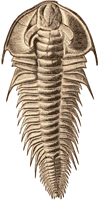
Lower Cambrian Trilobite
genus Olenellus. length 6"
from Georgia, Vermont,
|
sponges, corals, graptolites, echinoderms, worms - scolithus
(worm-borings), brachiopods (inarticulate and articulate), molluscs -
lamellibrancha, gastropods, crustaceans (trilobites)
2. Middle
Cambrian Period 474
474
475
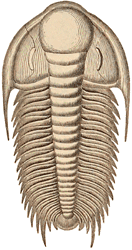
Middle Cambrian Trilobite
Paradoxides, length 10"
Braintree, Mass.
Sponges, Echinoderms, cystoids, Brachiopods, Mollusks,
Crustaceans, Paradoxide trilobites,
3. Upper
Cambrian Period 476
476
477
478
479
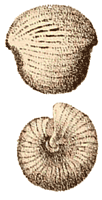
Upper Cambrian gastropod
Bellerophon p.478
Eureka, Nev.
|
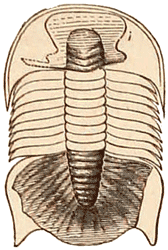
Upper Cambrian Trilobite
Dicellocephalus, p. 479
length 6", Minnesota
|
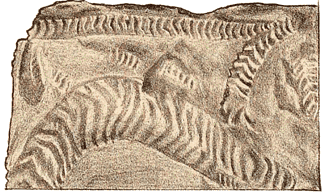
Upper Cambrian
Trilobite track -- 4 1/2 inch width, p. 479
New Lisbon, Wis.
|
Potsdam sandstone, genus Dicellocephalus trilobites,
Rhizopods, sponges, cystoids, Brachiopods, Pteropods, Gastropods,
trilobite tracks, Wolcott
2. Foreign 480
480
481
482
3. Geographical and Physical Conditions and
Progress 483
483
484
485
486
487
488
"Of the many species of Trilobites
from the Lower Cambrian, very few are nown to occur in the Middle
Cambrian; and few of those of the Middle, in the Upper... the thickness
of the rocks proves that the three divisions of the period were
immensely long." p. 487-8.
Potsdam sandstone wave ripple-marks
II. Lower Silurian Era 489 [Now known as the Ordovician Era. See p.489.]
1. North American 489
489
490
491
492
493
494 495
496
497
498
499
500
501
502
503
504
505
506
507
508
509
510
511
512
513
514
515 516
Lower Silurian - Ordovician, limestone - mostly dolomyte; some
calcyte, Cincinnati uplift, Calciferous epoch, Chazy epoch,
Trenton period, Hudson epoch, insects, fishes, sponges, hydrozoans,
Hydrozoan corals,
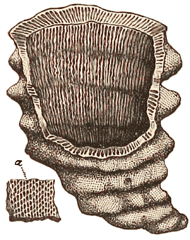
Lower Silurian (Ordovician)
Hexactinellid Sponge
up to 3' length, 4" diam.
Mingan Islands, p.497.
|
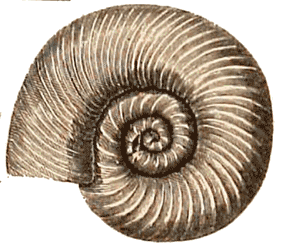
Lower Silurian (Ordovician)
Trocolites Ammonius (Ammonite)
diameter can exceed 1 ft. p.508.
|
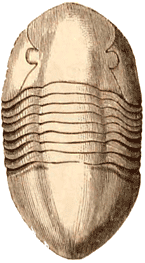
Lower Silurian (Ordovician)
Trilobite Assphus platycephalus
up to 8" length. p.508
Trenton Falls, N.Y.
|
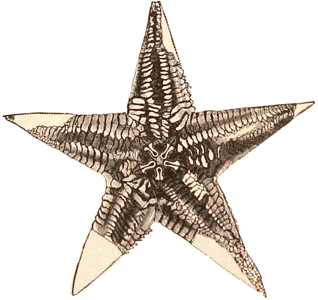
Lower Silurian (Ordovician)
Asteroid Palaeaster Jamesi
|
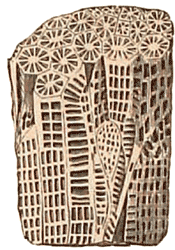
Lower Silurian (Ordovician)
Coral Flavistella p.511
|
2. European 517
517
518
519 520
521
522
523
3. General Observations: Rocks; Climate; Biological
Progress
524
524
525
4. Upturning at the close of the Lower Silurian
526
526
527 528
529
530
531
532
533
534
Cincinnati geanticline, thickness up to 20,000 ft.,
NEOPALEOZOIC
SECTION
Eopaleozoic - thalassic period - continental seas, Neopaleozoic -
land emergence, land-life emergence: forests, amphibians, reptiles,
largest insects, land invertebrates,
Subdivisions: Lower Helderberg Period (Upper Pentamerus epoch, Shaly
limestone epoch, Lower Pentamerus epoch), Onondaga Period (Salina beds,
Water-lime, Tentaculite limestone), Niagara Period (Niagara epoch
(shale, limestone), Clinton epoch (Clinton group), Medina epoch (Oneida
beds, Medina beds)
III. Upper Silurian Era 535
1. North American 535
535
536
537
Cincinnati uplift, embryonic Hudson River, Mississippi, St.
Lawrence, Shawangunk grit,
1. Niagara Period 538
538
539
540
541
542
543
544
545
546
547
548
549
550
551
Medina epoch, Clinton group, red fossil ore, Acadian
trough,
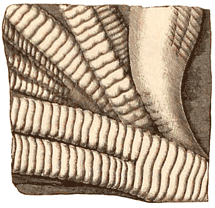
Upper Silurian
Sea-worm tracks in sandstone
p. 545
|
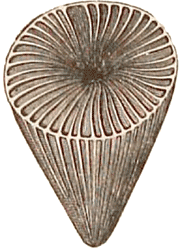
Upper Silurian
Cyanthophylloid Coral
p. 545
|
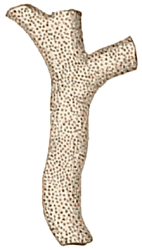
Upper Silurian
Bryozoan Coral p.545
|
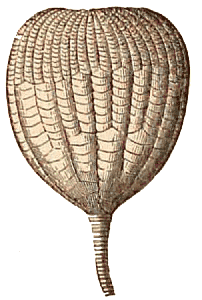
Upper Silurian Crinoid
Ichthyocrinus, p. 547
|
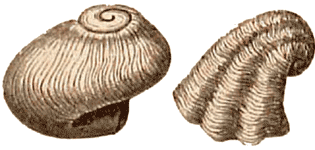
Upper Silurian Gastropod p.549
|
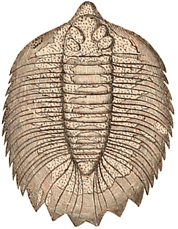
Upper Silurian Trilobite
Lichas Boltoni, Niagara group,
length to 7". p. 549
|
2. Onondaga Period 552
552
553
554
555
556
557
Onondaga period: Salina group - shales and marlytes, Salt group
brines, Water-lime group,
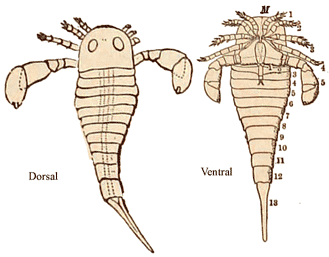
Upper Silurian
Onondaga Period Eurypterid
length up to 20" p. 556
|
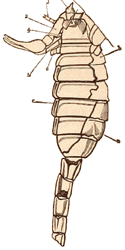
Upper Silurian
Onondaga Period
Arachnid Scorpion
Proscorpius
c. 2" length p. 557 |
3. Lower Helderberg Period
558
558
559
560
561
562
Helderberg beds, Hudson River, Lake Champlain, Montreal, Lower
Pentamerus limestone, Catskill limestone, Scutella limestone,
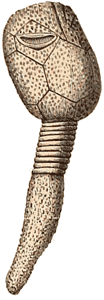
Upper Silurian
Cystoid Aplocystites
p. 559.
|
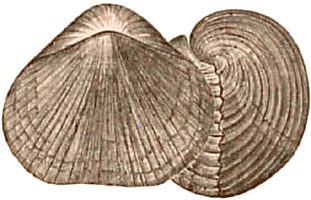
Upper Silurian Brachiopod
Pentamerus
Helderberg mountains p.561.
|
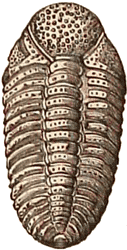
Upper Silurian
Trilobite Phacops Logani
p.561
|
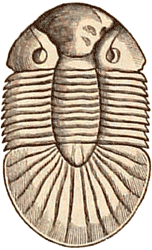
Upper Silurian
Trilobite Bronteus pompilius
p.561
|
2. Foreign 563
563
564
565
566
567
568 569
May Hill Sandstone, Shropshire England, Gloucestershire England,
Upper Llandovery group, Wenlock Group, Ludlow Group
3. General Observations: Geological; Geographical;
Biological 570
570
571
572
573 574
Appalachian geosyncline, shallow seas and emerging seashore flats,
earliest Arachnids (Scorpions) cockroaches (Orthopters), Graptolite
& trilobite diminution, increase in Brachiopods, increase in
Pteropods, Gastropods, advance from entomostracans to tetradecapod
crustaceans, fishes (Placoderms) only vertebrates in Upper Silurian,
IV. Devonian Era 575
Old Red Sandstone (Scotland), low grade land population,
1. North American 575
575
576
Early Devonian - Oriskany, Corniferous epochs, Middle Devonian -
Marcellus shales, Hamilton beds of Tully limestone, Upper Devonian -
Portage group, Chemung group, Oriskany sandstone, Cauda-galli grit,
Schoharie grit, Oniondaga limestone, Corniferous limestone, Goniatite
limestone, Tully limestone, Catskill formation, Eodevoniqan,
Mesodevonian, Neodevonian, Erian,
1. Oriskany Period 577
577
578
2. Corniferous Period 579
579
580
581
582 583
584
585
586
587
588
589
590
591
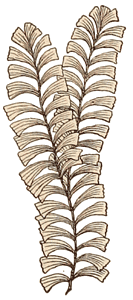
Lower Devonian Fern
Sphenophyllum
Ohio Corniferous limestone
p. 583.
|
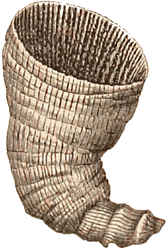
Lower Devonian Polyp-Coral
Cyanthophylloid
Upper Helderberg Coral reef
p.584.
|
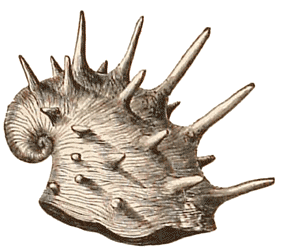
Lower Devonian Gastropod
Platyceras dumosum
p.586
|
3. Hamilton Period 592
592
593
594 595
596
597
598
599
600
601
Eureka Devonian limestone, Gymnosperms, Sporangites,
Spongiozoans,
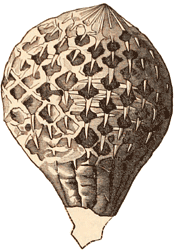
Middle Devonian Spongiozoana
Sphaerospongii tesselata p. 597
Manitoba
|
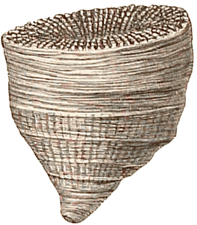
Middle Devonian Polyp-Coral
Heliophyllum p. 597
Canandaigua, N.Y.
|
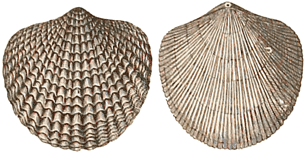
Middle Devonian Brachiopod p. 598
Atrypa
|
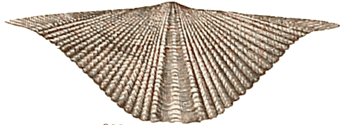
Middle Devonian Brachiopod
Spirifer Pennatus p.598
|
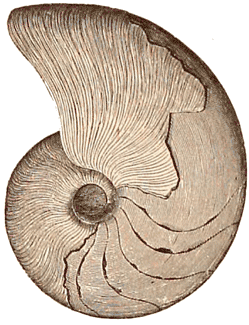
Middle Devonian Nautiloid
Cephalapod Goniatites p. 599
can exceed 1 ft. in diameter
|
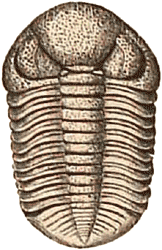
Middle Devonian Trilobite
Phacops rana p. 599
length to 8".
|
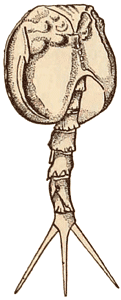
Middle Devonian Phyllopod
Echinocaris p. 600
length to 8"
Canandaigua Lake N.Y.
|
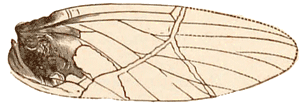
Middle Devonian Insect
Xenoneura p. 600
wing spread to 5"
St. Johns, New Brunswick
related to Mayflies
|
4. Chemung Period 602
602
603
604
605
606
607
608
609
610
611
612
613
614
615 616
617
618
619 620
621
Chemung Period (Later Devonian): Portage epoch, Chemung epoch,
Catskill group, Genesee shale, Portage group, Naples group, Ithaca
group, Cayuga lake
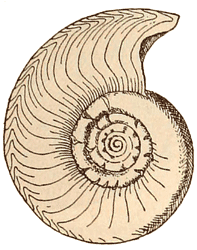
Upper Devonian
Clymenia Neapolitania p.614
Related to Nautilis
New York
|
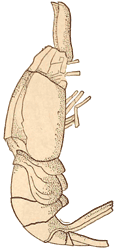
Upper Devonian
First True Shrimp p.615
Macrural Decapod Crustacean
|
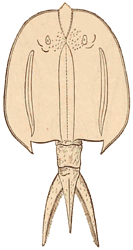
Upper Devonian
Mesothyra Oceani (shrimp) p. 615
length 10" breadth 5"
|
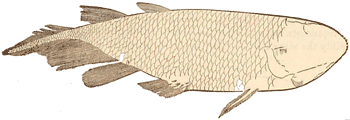
Upper Devonian
Crossoptrygian Ganoid p.618
|
2. Foreign 622
622
623
624
625
626
627
Old Red Sandstone of Scotland 10,000-16,000 ft. thickness,
Eurypterids,
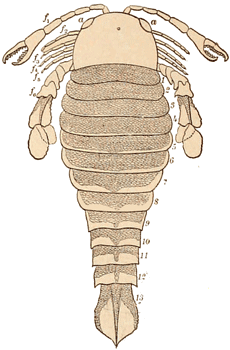
Upper Devonian
Old Red Sandstone
Eurypterid p.623
length 6 ft.
|
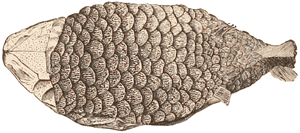
Upper Devonian
Old Red Sandstone
True Ganoid
Holoptychus p. 625
N. Scotland
|
3. General Observations: Geological; Geographical
628
628
629
4. Upturning at the close of the Devonian 630
630
Carboniferous, coal-making, Pennsylvanian period, Mississippian
period
V. Carbonic Era 631
631
632
1. North American 633
633
634
635
1. Subcarboniferous Period
636
636
637
638
639
640
641
642
643
644
645
646
Mississippian group: Kinderhook Group, Osage Group, St. Louis
Group, Chester or Kaskaskia Group
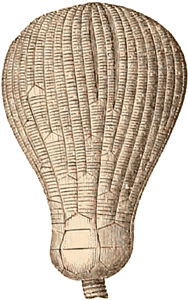
Sub-Carboniferous Crinoid
woodocrinus elegans p. 640
|
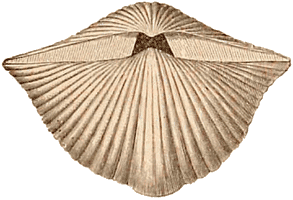
Sub-Carboniferous Brachiopod
Spirifer p. 642
|
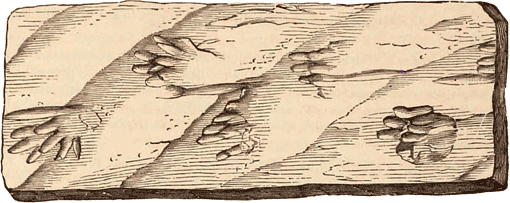
Sub-Carboniferous Amphibian tracks
sauropus primevus p. 645
Pottstown PA.
total length 5 ft.
with fresh ripples and raindrops
|
2. Carboniferous Period 647
647
648
649
650
651
652
653
654
655
656
657
658
659
Pottsville Conglomerate, Coal-measures, Anthracite coal region,
Bitumionous coal region, Cannel coal, Mauch Chunk, Nesquehoning Valley,
Carbondale Calamite forest, Lepidodendron,
3. Permian Period 660
660
661
662
663
664
665
Life of the
Carboniferous Period
666
667
668 669
670
671
672
673 674
675
676
677
678
679
680
681
682 683
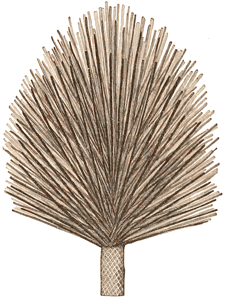
Permian-Carboniferous
branch of Lepidodendron p. 667
Pittsburg, PA
|

Permian-Carboniferous
cone of Lepidodendron p. 669
Pittsburg, PA
|
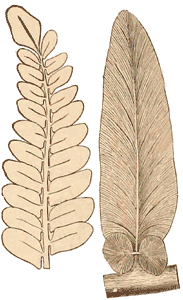
Permian-Carboniferous
fern leaves of Neuropteris p. 671
|

Permian-Carboniferous
Gymnosperm fruit
Cycad Cordaites p. 672
Cannelton, PA
|
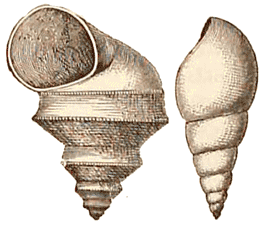
Permian-Carboniferous
Lamellibranch Gastropods p. 675
|
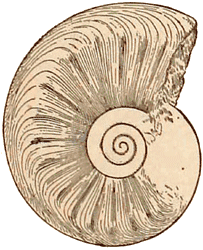
Permian-Carboniferous
Nautiloid Cephalapod p. 676
Temnochilus crassum
|
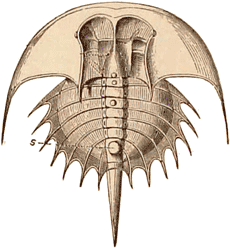
Permian-Carboniferous
Limuloid Prestwichia p. 677
Morris, Illinois
|
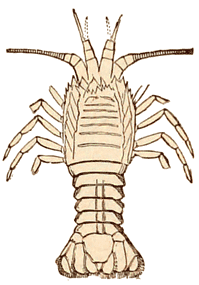
Permian-Carboniferous
Decapod Crustacian
Anthracopalaemon p. 678
|
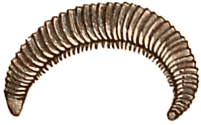
Permian-Carboniferous
Myrapod Crustacean
Xylobius p. 678
|
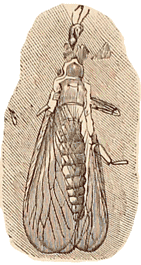
Permian-Carboniferous
Insect Neuropterid p. 679
|
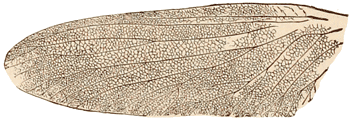
Permian-Carboniferous
Locust Wing Pritophasmid p. 679
|
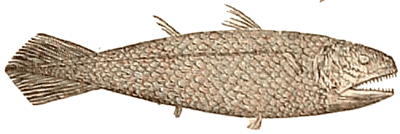
Permian-Carboniferous Coelacanth
Ganoid Coelacanthus p. 680
|
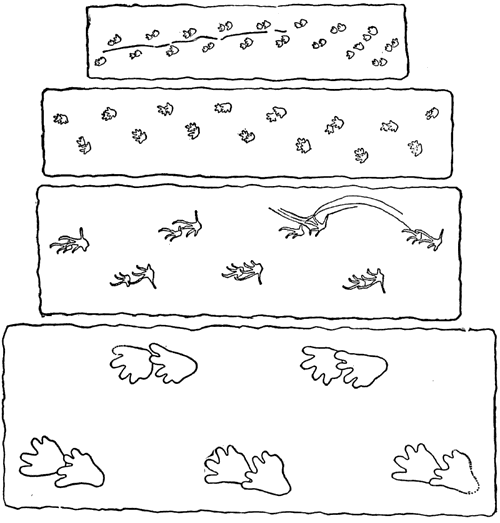
Permian-Carboniferous
Amphibian Tracks p. 684
from a single surface 12' square
Osage, Kansas.
|
Life of the
Permian Period
684
685
686
687
688
689
690
691
692
Lycopods 60-90 ft. tall, modern Horse-tails, Ground-pines
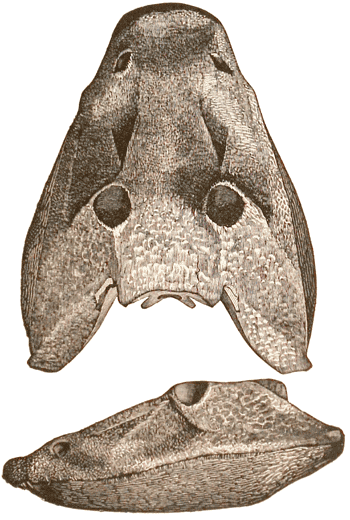
Permian Amphibian
Eryops megacephalus p. 686
Texas
Permian Amphibian
Cricotusheteroclotus
Danville, Ohio
|
|
Permian Amphibian
Cricotusheteroclotus
Danville, Ohio
|
2. Foreign 693
693
694 695
696
697
698
699
700
701
702
703
704
705
706
707
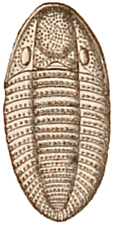
Permian Subcarboniferous Trilobite
Phillipsia Seminifera p. 700
Great Britain
|
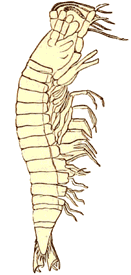
Permian Crustacean
Anthracopaloemon p. 701
Saarbrück
|
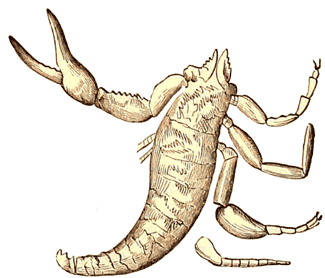
Permian Scorpion
Cyclophthalmus p. 701
Corda, Bohemia
|
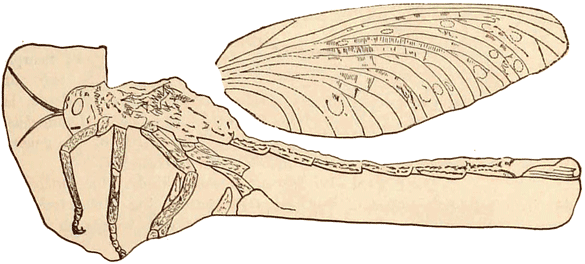
Permian Insect Protophasmid
Titanophasma p. 702
length over 24"
related to modern walking-stick |
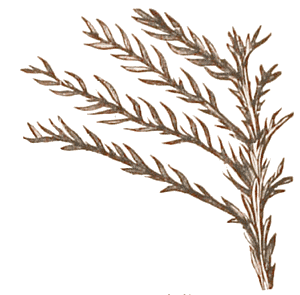
Permian Conifer
Walchia piniformis p. 705
|
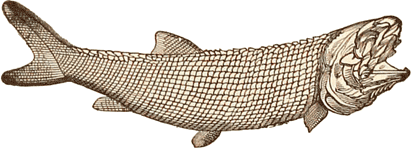
Permian Ganoid
Palaeoniscus p.. 705
length 9" |
3. General Observations: Geological and
Geographical; Meteorological; Formation of Coal 708
708
709
710
711
712
713
"The Coal period was a time of
unceasing change, - eras of verdure alternating with others of
wide-spread waters, destructive of all the vegetation and of other
terrestrial life except that which covered regions beyond the
Coal-measure limits. Yet it was an era in which the changes went
forward for the most part with such extreme slowness, and with such
prevailing quiet, that, if man had been living then, he would not have
suspected their progress." p. 710
General Observations on Paleozoic Time
714
714
715 716
717
718
719 720
721
722
723
724
725
726
727
merosthenic, prosthenic,
[p. 726-7]
The term Paleozoic is not
simply a name for a division of geological time. It expresses a
profound historical truth. It signifies the reality of a Paleozoic
character in the world's early life which was exhibited not only in the
very earliest of plants and animals, but also throughout the succession
of species, and so decidedly that the Paleozoic world stands out in
bold contrast with the Mesozoic. Corals, Crinoids, Trilobites,
brachiopods and Mollusks, even Cephalopods, commence in the Cambrian
and are prominent throughout the Paleozoic time. Brachiopods at its
close lose nearly all otheir Paleozoic genera; Crinoids drop their
Paleozoic characteristics, and corals also with few exceptions;
Nautiloids lose nearly all their Orthoceras-like forms; while the
coiled Nautilus-like species culminate in the Carboniferous,m and have
few species and genera afterward. So the Insects had Paleozoic features
which were dropped at the same time. The Placoderm, Dipnoan, and Ganoid
Fishes, which were eminently Paleozoic types, culminated in the
Devonian and Carboniferous eras, and only inferior Dipnoans and Ganoids
existed later. Cryptogamous Plants culminated in the Carboniferous era,
and only the Calamites and some related genera, and a few genera of
ferns survived into the Mesozoic.
The disappearance of species at the close was not due chiefly to
physical catastrophe, for the Trilobites had dwindled greately by the
close of the Devonian; and similar expansions to culmination in many
other tribes, with subsequently a commencing decline, occurred both
among plants and animals.
Principles of Biological Change and Progress for Animals:
1. From the simple, regular, or primitive in
structure to the specialized.
a. From a structure with two
or more functions to organs, each with its specialized function.
b. From a single-function
organ has several uses, to special forms for each kind of use.
c. From simpler forms of
specialization to more complex, better adapted forms.
d. From a specialized form to
others with newly acquired uses
e. From a head with large
sense-organs and mouth-organs to one with smaller and well-compacted
organs.
f, From large aquatic structures
to smaller terrestrial structures.
2. Approximate parallelism between geological
succession of structures and embryological succession in development.
3. Degeneration: a. Of an organ to a more primitive
form; b. diminished size or disappearance of an organ; production of
low-grade structures that have needed form and activity
4. From diffuse to concentrated structures.
a. From elongated to abbreviated; b.
From multiple, indefinite number of segments, to limited numbers and
arrangement; c. From posterior locomotive organ to anterior locomotive
organ; d. From stronger posterior limbs (merosthenic) to stronger
anterior limbs (prosthenic).
Principles of Biological Change and Progress for Land Plants:
Rhizocarps (Acrogens, spores), Protosalvinia (Equiseta - Calamites and
Annulariae), Selaginella lead to Lepidodendrids lead to
Sigillaroids, Acrogens and Yews and true gymnosperms (Conifers).
Precursor to Ferns not known. Ferns led to Cycads, the other division
of Gymnosperms. Thus gymnosperms had a double source. Lepidodendrids
absent from Permian and Sigillaroids absent after Permian. Equiseta
maximum development during Carboniferous. Later Calamites and Equiseta
become inferior modern types.
Invertebrates: 1.
Hydrozoans; Actinozoans: Graptolites
begin in Cambrian, disappear in Lower Devonian. Cyathophylloid Corals
begn in Cambrian, increase in Silurian, (almost) disappear in Lower
Carboniferous. Challenger expedition dredged living Cyathophylloid
Coral from ocean bottom. Favosites Corals ended in Devonian. 2.
Echinoderms: Cystoids (Crinoids) end
in Devonian. No paleozoic types of Crinoids survive after Permian; in
Mesozoic, genus Encrinus appears, related to the modern Pentacrinus.
Starfishes begin in Cambrian and Echinoids in the Silurian. 3.
Molluscoids. Brachiopods begin in
Cambrian. Most abundant of all Paleozoic animal life. All but 4 genera
disappear at end of Permian: survivors are Lingula, Crania, Spirifer,
and Rhynchonella. 4.
Mollusks:
Pteropods dominate in Early/Mid-Cambrian, diminish after Lower Silurian
(Ordovician). Lamellibranchs & Gastropods very small forms in Early
Cambrian. Cephalopods culminate after Paleozoic times. 5.
Limuloids. Eurypterids begin in
Lower Silurian (Ordovician). Great size through Devonian, diminish to
small species in Carboniferous. Limulids appear in Silurian through
Carboniferous, continue in compacted form to present. The Large
Eurypterids, several feet in length, would have been helpless among
Sharks and Ganoids. 6.
Crustaceans.
Trilobites flourish in Lower Silurian (Ordovician); achieve extravagant
forms in Devonian, but diminish in number of species in Carboniferous.
End after Carboniferous. Cirripeds (Barnacles) appear in Lower Silurian
(Ordovician). True Isopods appear in early Devonian, probably
successors to trilobites. Macruran Decapods (Shrimps) appear in
Devonian and Brachyurans (Crabs) in Carboniferous. 7.
Myriapods, Arachnids, Insects.
Arachnids & Insects begin in Upper Silurian era, Myriapods in Lower
Devonian. Achieve great size in Devonian and Carboniferous, wingspread
exceeding two feet. Orthopteroids (Cockroach family) have great loss in
size after Carboniferous. Scorpions of Upper Silurian are much like
modern species. True Spiders (Arachnids) appear first in Carboniferous,
possibly because they are not well-preserved as fossils. Myriapods
first appear in early Devonian. Higher Insects typically experience
metamorphisis
Vertebrates: 1. Fishes (Placoderms,
Ganoids, Sharks). Pteraspids commence in Lower Silurian
(Ordovician). Long vertebrated tails. Ganoids (Crossopterygians) also
commence in Lower Silurian (Ordovician). Many Selachians, Dipnoans and
typical Ganoids flourish in the Devonian. Brachiates (armor-clad) fish
appear (and end) in the Devonian. Lung-fish (Dipnoans) appear in
Carboniferous. 2.
Amphibians and
Reptiles. Amphibians are common in the old Carboniferous. True
Reptiles appear in the Permian.
Post-Paleozoic, or Appalachian, Revolution
728
728
729
730
731
732
733
734
735
736
Topographic Changes in the Indian Ocean:
Gondwána Land 737
737
III. MESOZOIC TIME 738
738
1. American Triassic and Jurassic Period
739
739
740
741
742
743
744
745
746
747
748
749
750
751
752
753
754
755
756
757
758
759
760
761
762
763
764
765
766
767
Mesozoic subdivisions: Cretaceous - Chalk Period, Jurassic - Jura
limestone, Triassic - Variegated sandstone, Buntersandstein, Poikilitic
group, conybeare, Buckland, New Red Sandstone, Lower Jurassic -
Liassic, Middle Jurassic - Oölytic, Upper Jurassic - Portlandian,
Lower triassic - Lower Trias or Vosgian, Middle Trias - Franconian,
Upper Trias - Keuperian, Rhoetic, Pacific Border: Rocky Mountain
belt, Plateau belt, Sierra belt, Coast belt,

Triassic Ganoid
Catopterus gracilis p. 751
Durham, Connecticut
length about 10 inches
|
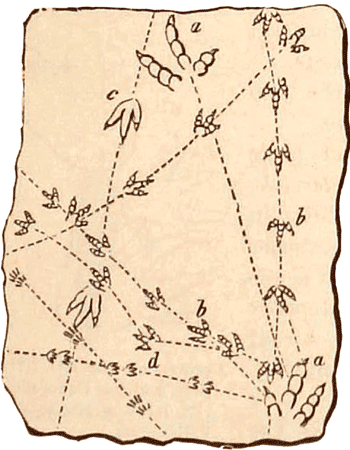
Triassic Sandstone slab
biped dinosaur tracks p.752
width about 90 inches
|
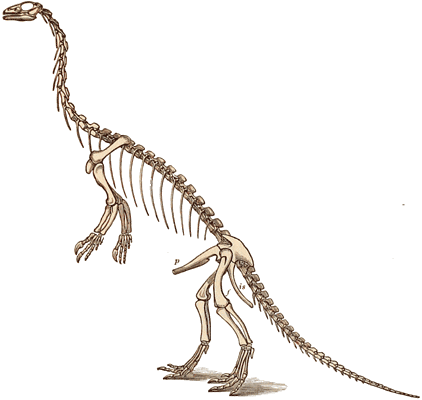
Triassic carnivorous dinosaur
Anchisaurus colurus p. 753
Manchester, Connecticut
|
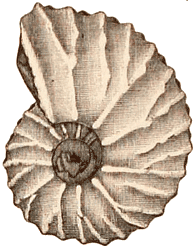
Triassic Ammonite
Trachyeras p. 757
|
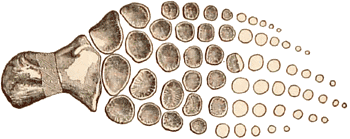
Jurassic Sea-Saurian Reptile
Left-hind paddle of Ichthyopterygian
Baptanodon discus, p. 761
length 8-9 feet
|

Jurassic Brontosaurus excelsus p. 763
length 60 feet, height 15 feet.
|
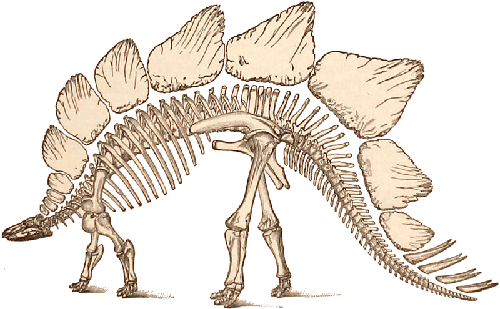
Jurassic Stegosaurus p. 764
length about 30 feet
|
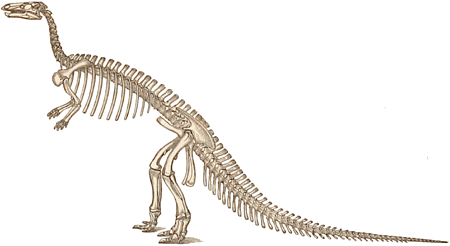
Jurassic Ornithopoda Camptosaurus
herbivarous dinosaur p. 765
|
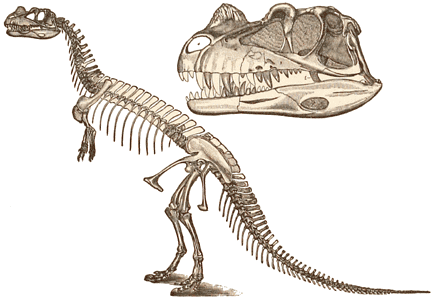
Jurassic Carnivorous dinosaur and head detail
Ceratosaurus nasicornis p. 766
|
2. Foreign Triassic and Jurassic 768
768
769 770
771
772
773 774
775
776
777
778
779
780
781
782 783
784
785
786
787
788
789
790

Triassic Crustacean
Macruran
Pemphix Sueurii p. 771
allied to crawfish
|
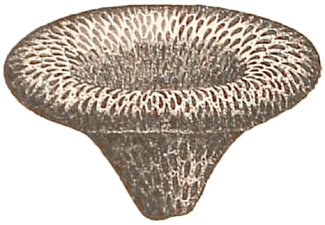
Jurassic Siliceous Hexactinellid Sponge
Tromadictyon
Middle Oölite p. 777
|
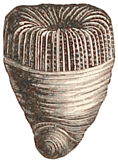
Jurassic Polyp-Coral
Oölyte
Montlivaltia p. 777
|
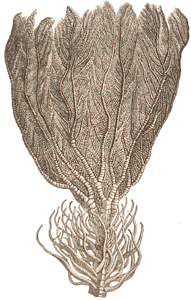
Jurassic Crinoid
Pentacrinus p. 778
|
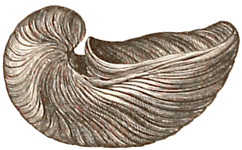
Jurassic Lamellibranch
Gryphoea p. 779
|
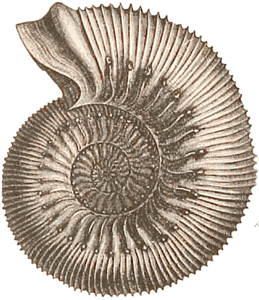
Jurassic Ammonite
Stephanoceras p. 781
Lower Oölitic
|
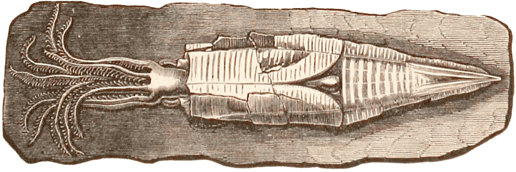
Jurassic Belemnite
Belemnoteuthis p. 782
Oxford Clay.
|
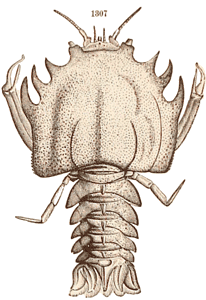
Jurassic Triangular Crab
Eryon arctiformis p. 783
|

Jurassic Ganoids
Aspidorhyneus p. 784
pike-like form
|
3. General Observations: Continental Comparisons; Climate;
Biological
Changes; Upturnings and Mountainmaking 791
791
792
793
794 795
796
797
798
799
800
801
802
803
804
805
806
807
808
809
810
811
homocercal, heterocercal, reduction in vertebrae, modern
insects,
Mammal differentiation of teeth: incisors, canines, molars, locomotion:
caudal or urosthenic, limbs or podosthenic, hind-limb locomotion, small
brain era, degeneration: toothed to toothless jaws, many to few teeth,
limbs to paddles, turtles, Australia as the Triasssic continent:
Marsupial and Monotreme mammals, Sierra Nevada formed at close of
Jurassic,
[p. 794]
The Triassic period is, after the
Cambrian, the most eventful in the earth's biological history; that is,
the most productive of great branchings in the higher departments of
the Animal Kingdom. ... Through geological time progress was downward
as well as upward"
4. American Cretaceous Period 812
812
813
814
815 816
817
818
819 820
821
822
823
824
825
826
827 828
829
830
831
832
833
834
835
836
837
838
839
840
841
842
843
844
845
846
847
848
849
850
851
852
853
854
855
lower cretaceous: Trinity Epoch, Fredericksburg Epoch, Washita
epoch, Potomac formation, upper cretaceous: Dakota epoch, Colorado
Epoch, Montana Epoch, Laramie Epoch, tombigbee sands, Ripley
group, Austin limestone, Ponderosa marls,
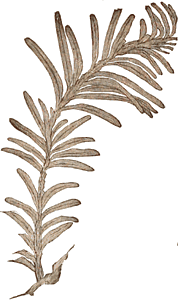
Lower Cretaceous
Sequoia Smittiana p. 833
Greenland
|
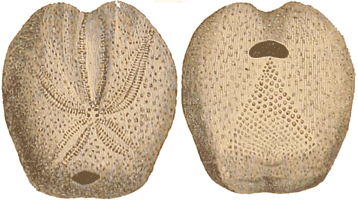
Lower Cretaceous Echinoderm
Enallaster Texamus p. 834
Comanche Beds, Texas
|
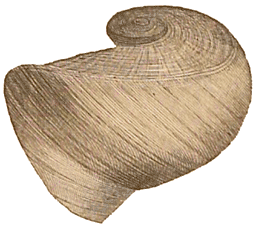
Lower Cretaceous Lamellibranch
Genera Chama
Requienia Texana p. 835
Comanche Beds, Texas
|
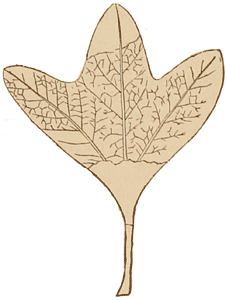
Upper Cretaceous Angiosperm
Sassafras Cretaceum p. 838
Dakota beds
|
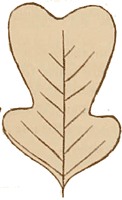
Upper Cretaceous Angiosperm
Tulip Liriodendron p. 838
Greenland
|
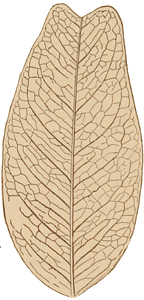
Upper Cretaceous Angiosperm
Tulip Liriodendron Simplex p. 838
Amboy Clays, New Jersey |
5. Foreign 856
856
857
858
859
860
861
862
863
864
865
866
Southeastern England Cretaceous, Dorset, Norfolk, London-Paris
basin, Lower Cretaceous: Neocomian, Wealden, Lower Greensand, Upper
Cretaceous: Gault or Albian, Cenomanian, Turonian, Senonian, Danian,
Maestricht beds,
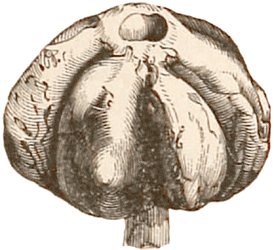
Cretaceous Lithistid Sponge
Siphonialobata p. 860
|
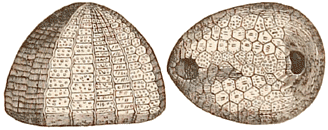
Cretaceous Echinoderm
Anachytes ovatus p. 860
Upper Chalk, England
|
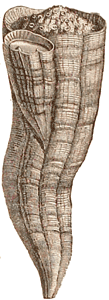
Cretaceous Lamellibranch
Hippurites Toucasianns p. 861
with small one attached
|
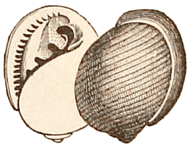
Cretaceous Gastropod
Cinulia p. 861
now extinct
|
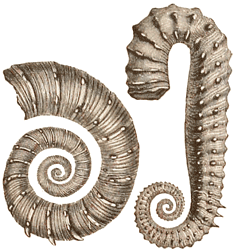
Cretaceous Ammonite
Open Coiled form p. 862
|
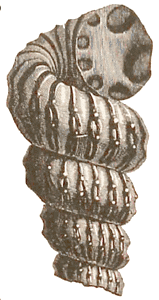
Cretaceous Ammonite
Spiral Form Turrulites p. 862
|
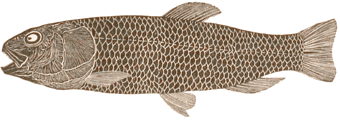
Middle Cretaceous Teleost Fish
Salmon Family
Osmeroides 8-14" length p. 862
|
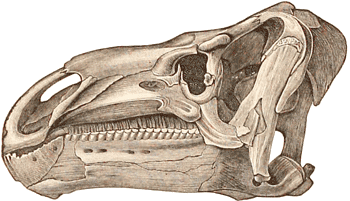
Cretaceous Itgnanodon Dinosaur
Skull length 8" p. 863
Wealdon, Belgium
|
6. General Observations: Geological; Geographical;
Biological; Gondwána Land 867
867
868 869
870
871
872
873
Cretaceous Cycads flourish, Unknown origin of Angiosperms,
Ammonites disappear at close of Cretaceous, reign of the Reptiles
in the Wealdon
Post-Mesozoic Revolution 874
874
875
876
877
878
IV. CENOZOIC TIME 879
I. Tertiary Era 879
879
Tertiary: era of Mammals, Quaternary; era of Man.
1. North American 880
880
881
882 883
884
885
886
887
888
889
890
891
892
893
894 895
896
897
898
899
900
901
902
903
904
905
906
907
908
909
910
911
912
913
914
915 916
917
918
Tertiary = Neozoic, Cenozoic: Eocene, Miocene, Pliocene,
Oligocene, Laramie beds, Eocene: Jackson Epoch, Vicksburg Epoch,
Miocene, Chattahoochee Epoch, Chipola Epoch, Yorktown, Epoch,
Chesapeake, Chipola group, Pliocene, Floridian Epoch, Merced group,
digitigrade
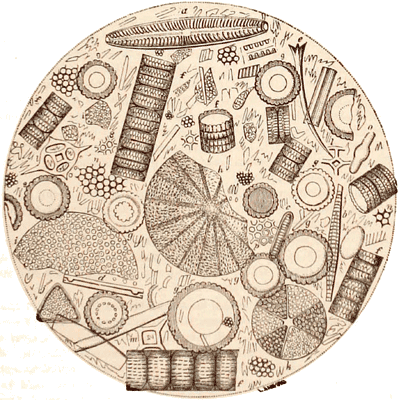
Miocene Protophytes - Diatoms,
Richmond Infusorial earth, p. 894
|
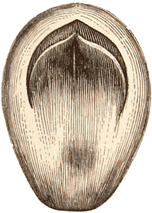
Eocene Carpolithes Brandonensis
Brandon nut p. 896
Undetermined genera
natural size
|
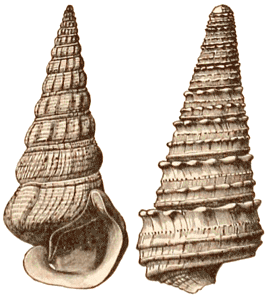
Miocene
Chattahoochee group p. 898 |
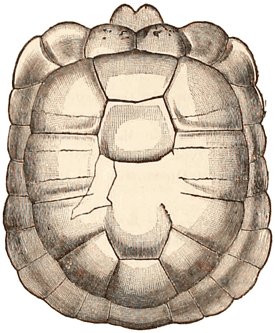
Eocene American Turtle
Testudo brontops, p. 901
length 2 2/3 feet.
|
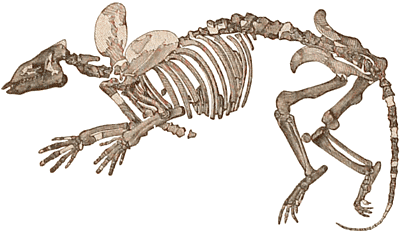
Eocene Mammal
Phenacodus primaverus p. 903
Wasatch beds
length 4 feet
|
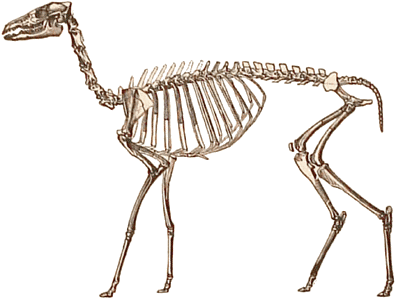
Miocene Camel family
Poëbrotherium labiatum, p. 911 |
2. Foreign 919
919
920
921
922
923
924
925
926
927
Mesozoic era closed with catastrophe of wide exterminations of
species, Calcairre grossier, Nummulitic limestone Eocene beds, Alps,
Oligocene Molasse in Switzerland,
3. General Observations: Biological;
Orogenic and
Epeirogenic; Climate 928
928
929
930
931
932
933
934
935
936
937
938
939
No precursors of placental Mammals,
II. Quaternary Era 940
940
941
942
Quaternary Era = the Era of Man: glacial period,
Champlain Period, Recent Period, Pleistocene, Laurentide ice-plateau,
Drumlins, Eskers, Kames
1. Glacial Period 943
1.
American 943
943
944
945
946
947
948
949
950
951
952
953
954
955
956
957
958
959
960
961
962
963
964
965
966
967
968 969
970
971
972
973 974
foldout,
page 944
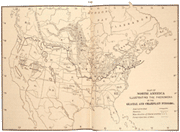
North America Map,
Glacial and Champlain periods
(200 ppi - 664 kb)
|
2.
Foreign 975
975
976
977
3. Cause of
Glacial Climate
978
978
979
980
2. Champlain Period 981
1.
American 981
981
982 983
984
985
986
987
988
989
990
991
992
993
994
2.
Foreign 995
995
996
3. Pleistocene Life 997
997
998
999
1000
1001
1002
1003
1004
1005
1006
1007
1008
1009
1010
1011
p. 997:
"Plants and invertebrates of
the Quaternary are, with rare exception, living species, while the
Mammals are nearly all extinct."
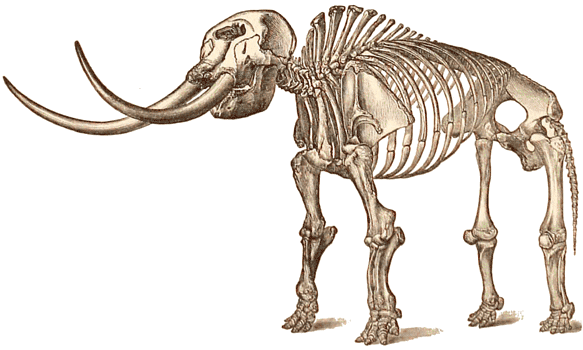
Pleistocene (Quaternary)
American Mastodon p. 998
Otisville, New York
height 13 feet, length 25 feet
|
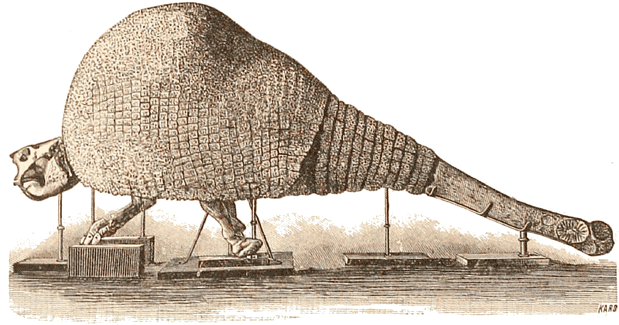
Pleistocene Glyptodont
Doedicurus clavacaudictus p. 1003
Argentina
length 11 2/3 feet.
|
4. Recent Period 1012
1012
1013
1014
1015
General Observations: Biological;
Antarctic Continent; Epeirogenic
1016
1016
1017
1018
1019 1020
1021
1022
General Observations on Geological History 1023
Geological Time 1023
1023
1024
1025
"the safe conclusion from all the
Geological and Physical facts is that Time is long, very long; long
enough for the development of all the earth's rocks, mountains,
continents, and life. Geologists have no reason to feel hampered in
their speculations, while the extreme results of calculation are
10,000,000 and 6,000,000,000 years." Note: Current age of
the Earth is 4.55 Billion years - DCB.
Climate ; the Earth's Development 1026
1026
1027
Progress in the Earth's Life 1028
1028
1029
1030
1031
1032
1033
1034
1035
1036
